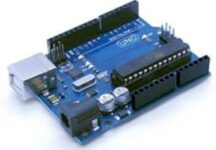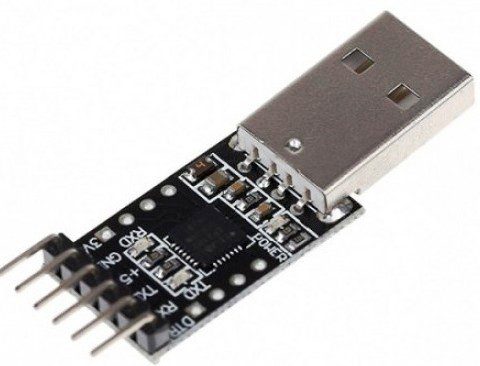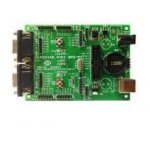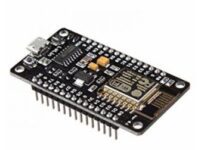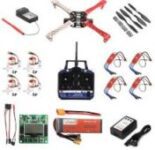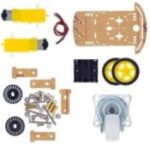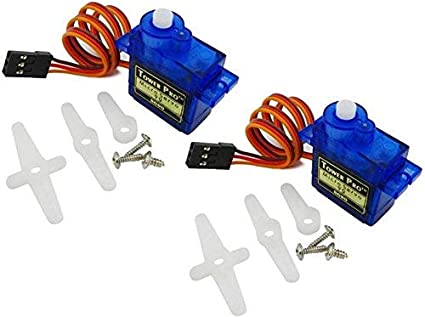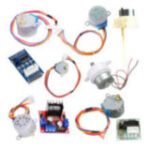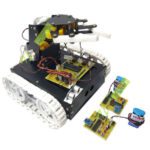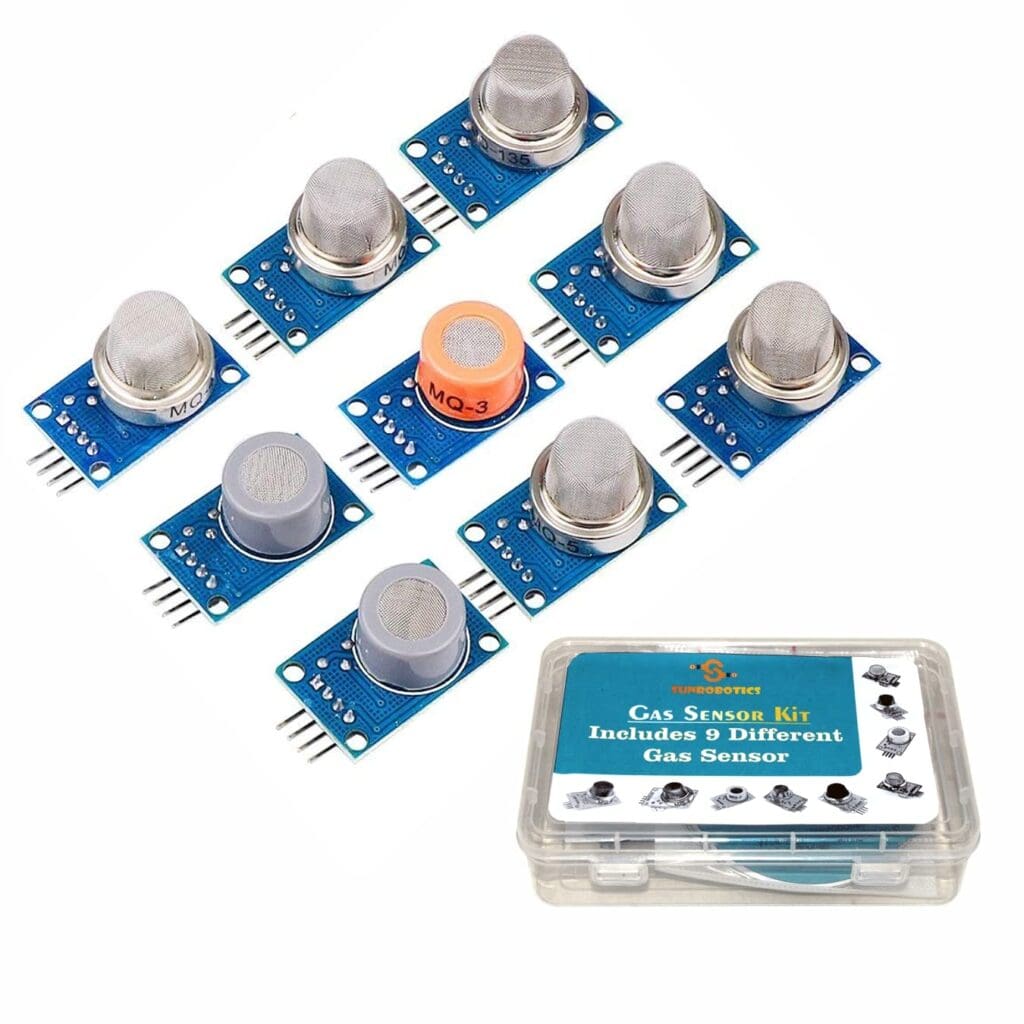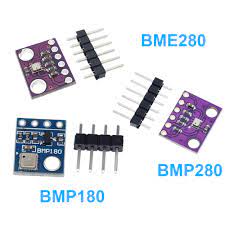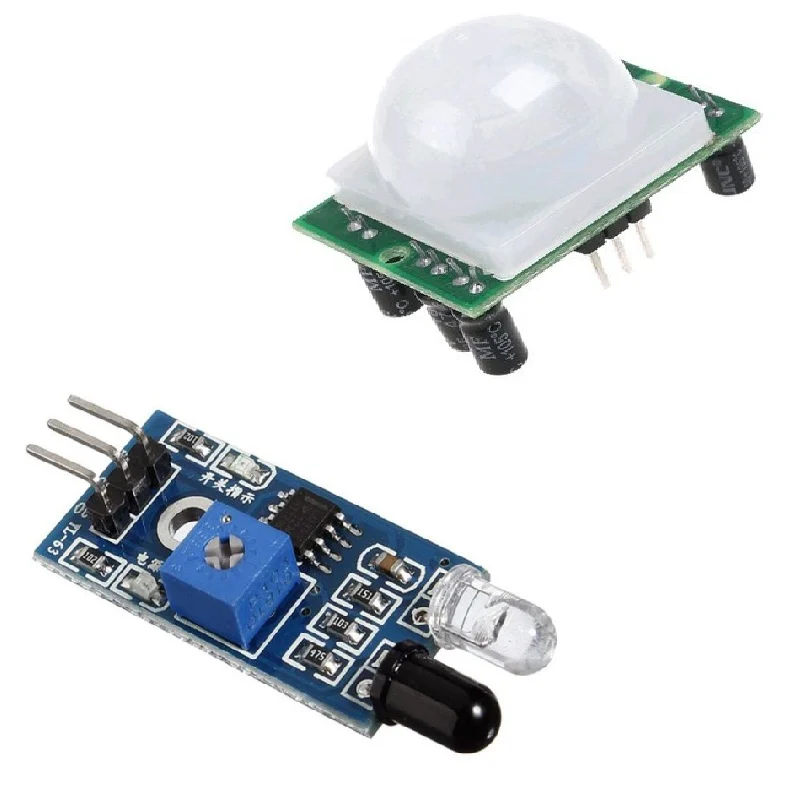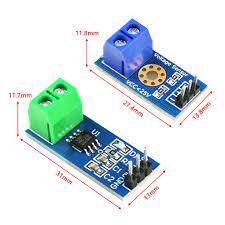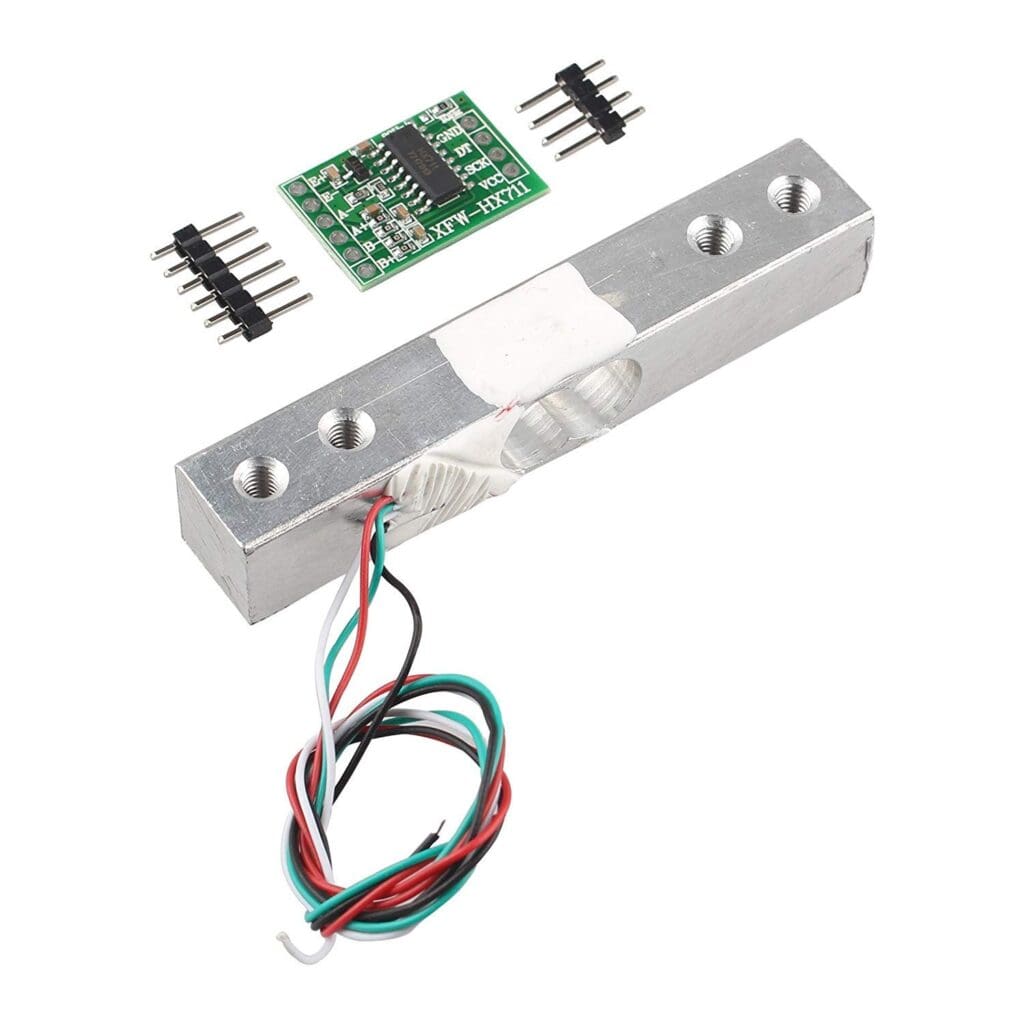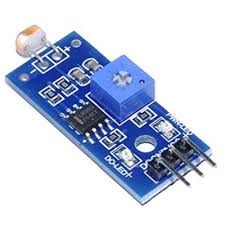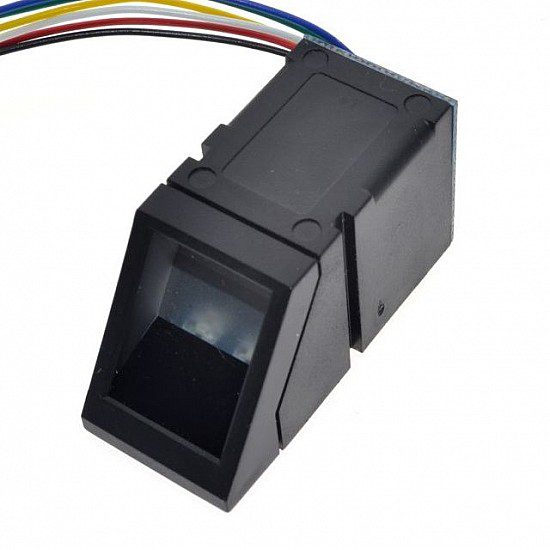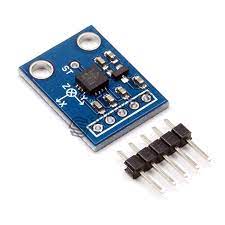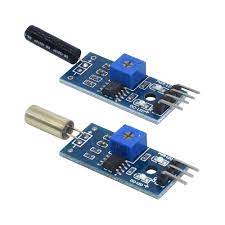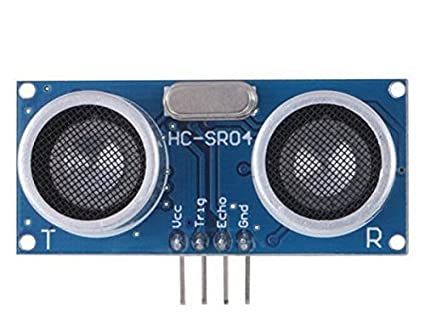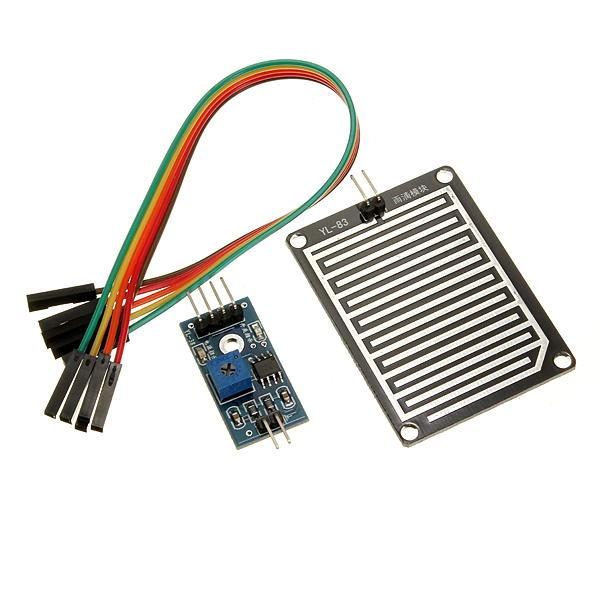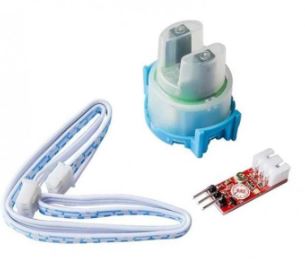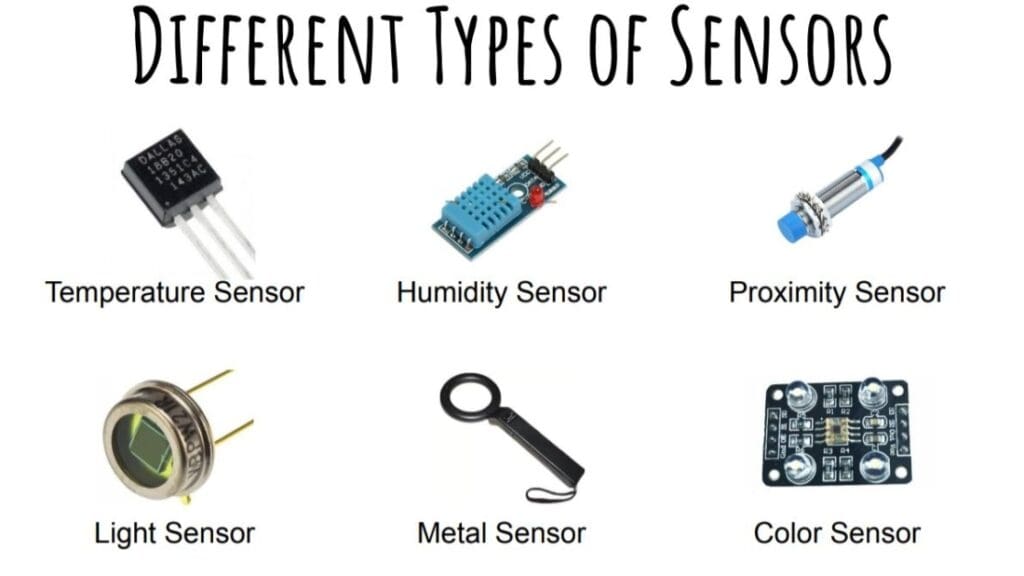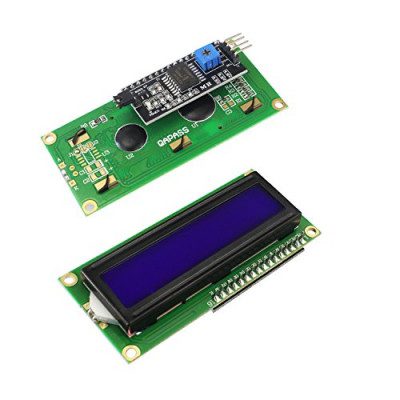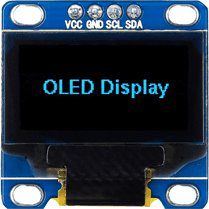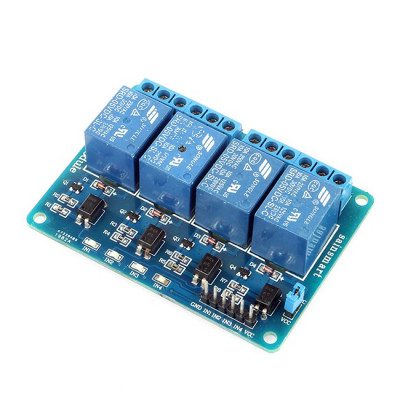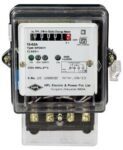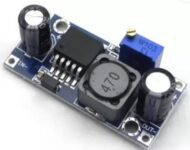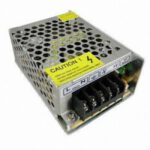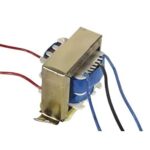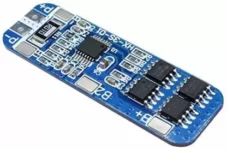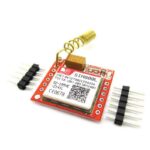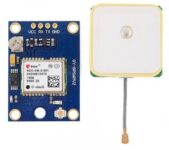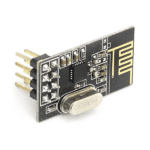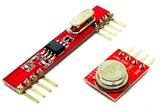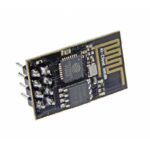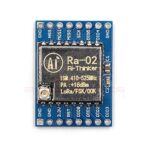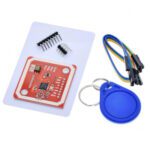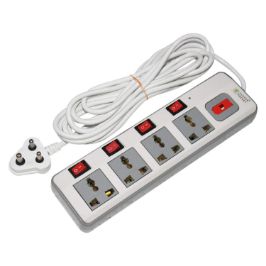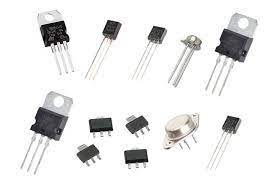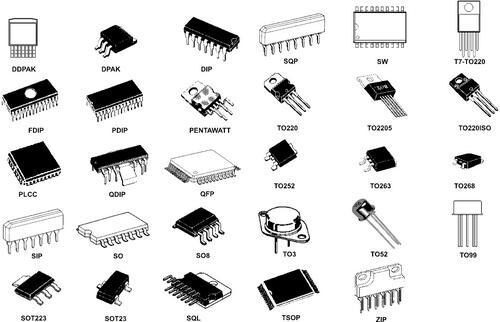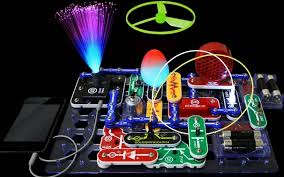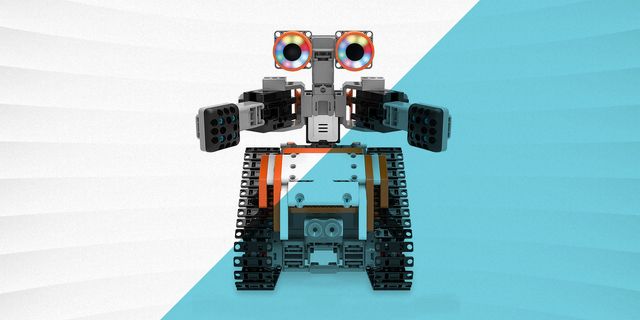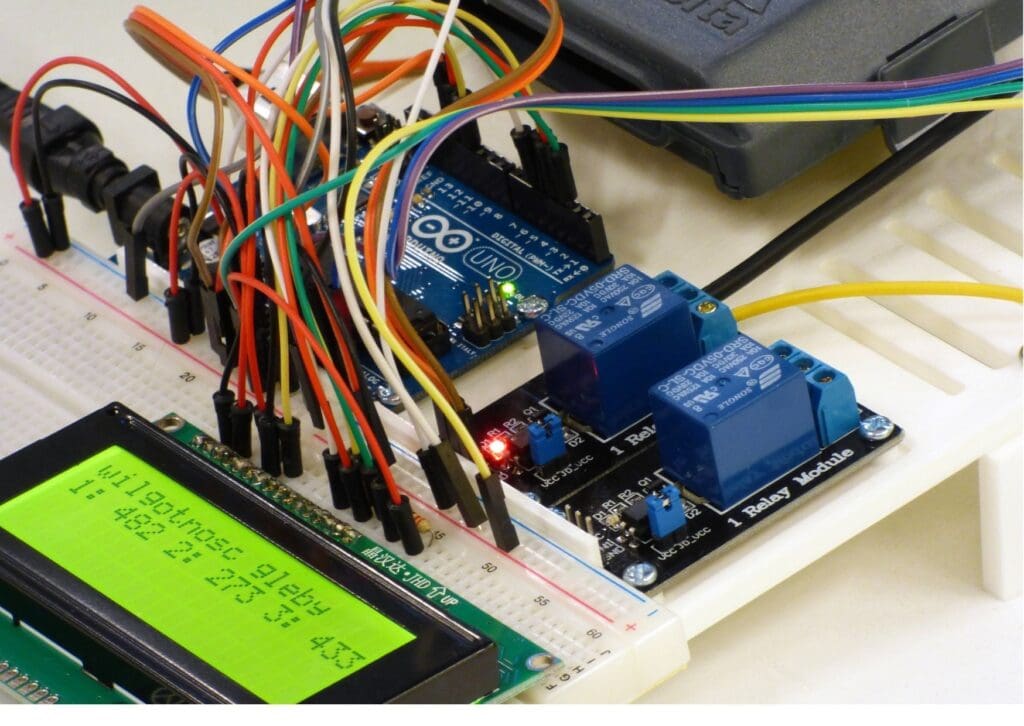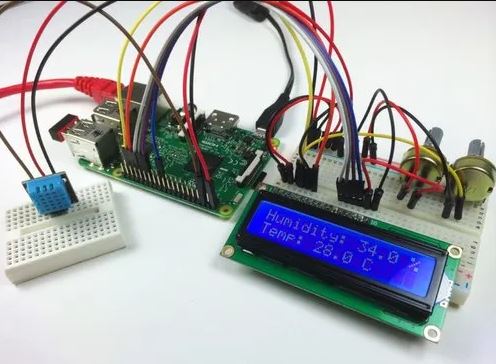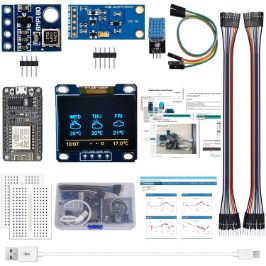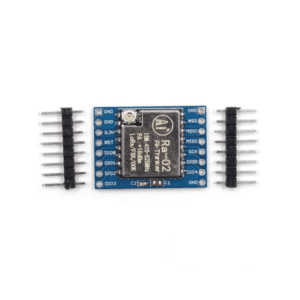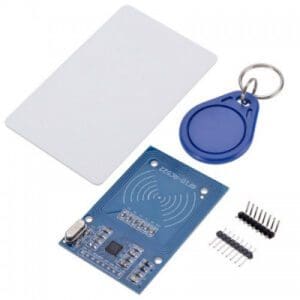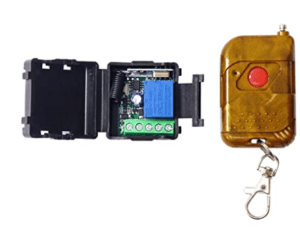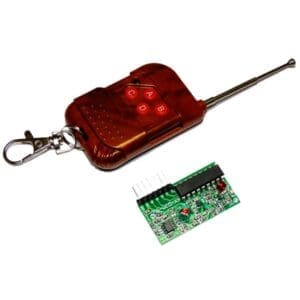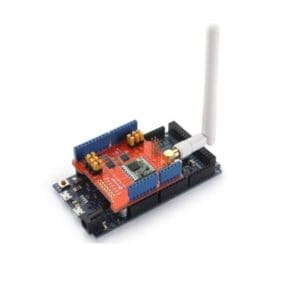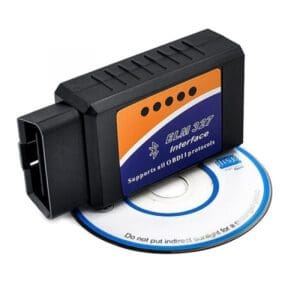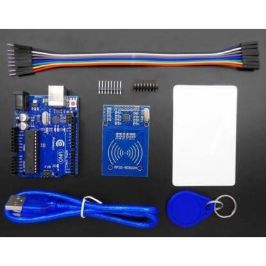Introduction
- In the realm of electronics, the fusion of Artificial Intelligence (AI) has sparked a transformative wave, ushering in an era of unprecedented innovation and efficiency. With the capacity to perceive, reason, and act autonomously, AI has become the cornerstone of numerous advanced applications within electronic systems. This integration transcends traditional paradigms, reshaping industries and redefining the boundaries of possibility.
- From the inception of smart sensors to the advent of autonomous vehicles, AI has permeated every facet of electronic technology, revolutionizing how we interact with and perceive the world around us. Through intelligent algorithms and sophisticated neural networks, electronic devices have transcended mere functionality to become intuitive, adaptive companions, capable of learning, evolving, and responding to dynamic environments in real-time.
- This synergy between AI and electronics has unlocked a myriad of possibilities, from predictive maintenance and personalized user interfaces to smart manufacturing and health monitoring. By harnessing the power of AI, electronic systems have transcended their traditional limitations, propelling humanity towards a future defined by interconnectedness, efficiency, and innovation.
- In this exploration, we delve into the advanced applications of AI in electronics, uncovering the transformative impact of this symbiotic relationship on industries, economies, and societies worldwide. From the intricacies of smart sensors to the complexities of cognitive radio networks, we unravel the threads of innovation that bind AI and electronics together, shaping the landscape of tomorrow’s technology.
Projects Categories:
Products Categories:
- Robotics
- Actuators
- Camera Modules
- Drone Kits
- Drone Components
- Chassis
- DC Motors
- Other Robotic accessories
- Pick and Place Modules
- Robotic Kit
- Servo Motors
- Stepper Motors
- Wheels
- Microcontrollers & Programmers
- 8051 Microcontroller
- Arduino Microcontroller
- ARM Development Board
- Interface Module
- NODMCU / ESP Modules
- PIC Microcontroller
- Raspberry Pi
- Devices and Actuators
- Display Modules
- Sensors & Module
- Power Supply / Batteries
- Wireless modules
- Electronic Components
- Wholesale Market
Description
- The integration of Artificial Intelligence (AI) into electronics has ushered in a new era of technological advancement, where machines are no longer just tools but intelligent companions capable of perceiving, reasoning, and adapting to their environment. This fusion has led to a plethora of groundbreaking applications across various sectors, from smart homes and healthcare to manufacturing and transportation. In these applications, AI algorithms enable electronic devices to analyze data, make informed decisions, and optimize processes in ways previously thought impossible.
- One prominent area where AI has made significant strides in electronics is in the realm of smart sensors and Internet of Things (IoT) devices. These devices, equipped with AI capabilities, can collect and analyze vast amounts of data in real-time, allowing for proactive decision-making and automation. For example, in industrial settings, AI-powered sensors can monitor equipment performance, detect anomalies, and predict maintenance needs, thereby minimizing downtime and maximizing efficiency. Similarly, in smart homes, AI-enabled IoT devices can adjust environmental settings based on user preferences and usage patterns, enhancing comfort and energy efficiency.
- Another key application of AI in electronics is in autonomous systems, particularly in the automotive industry. AI algorithms play a crucial role in enabling vehicles to perceive their surroundings, navigate complex environments, and make split-second decisions to ensure safety. Through the integration of sensors, cameras, and advanced processing units, autonomous vehicles can analyze data in real-time to detect obstacles, predict traffic patterns, and optimize routes. This not only enhances the driving experience but also holds the promise of reducing accidents and congestion on roads, ultimately revolutionizing transportation as we know it.

What is The Role Of Artifical intelligence in Electronics
- In advanced electronics, AI plays a multifaceted role that extends beyond mere automation to encompass intelligent decision-making, optimization, and adaptation. Here are some key roles of AI in advanced electronics:
1. Predictive Analytics and Maintenance: AI algorithms analyze vast amounts of data collected from electronic systems to predict potential failures before they occur. By identifying patterns and anomalies in sensor data, AI can forecast when components or systems are likely to malfunction, enabling proactive maintenance to prevent costly downtime.
2. Optimization of Performance and Efficiency: AI algorithms optimize the performance and efficiency of electronic systems by dynamically adjusting parameters based on real-time data. For example, in power management systems, AI can optimize energy consumption by predicting demand patterns and adjusting power distribution accordingly, leading to improved efficiency and cost savings.
3. Enhanced User Experience: AI powered interfaces and user experiences in advanced electronics offer personalized recommendations, intuitive interactions, and adaptive functionalities. Natural language processing (NLP) and machine learning enable devices to understand and respond to user commands, anticipate user preferences, and tailor experiences to individual needs.
4. Complex Problem Solving and Decision Making: AI algorithms enable electronic systems to solve complex problems and make autonomous decisions in real-time. In autonomous vehicles, for instance, AI processes data from sensors, cameras, and GPS to navigate safely, predict traffic patterns, and make split-second decisions, ensuring passenger safety and optimizing route efficiency.
5. Advanced Robotics and Automation: AI drives advancements in robotics and automation, enabling electronic systems to perform tasks with greater precision, adaptability, and autonomy. In manufacturing, AI-powered robots can handle intricate assembly processes, detect defects, and optimize production workflows, leading to higher productivity and product quality.
6. Data Security and Privacy: AI algorithms play a crucial role in enhancing data security and privacy in advanced electronics. Machine learning techniques can detect and mitigate cybersecurity threats, identify anomalous behavior patterns, and safeguard sensitive information from unauthorized access or breaches.
7. Personalized Healthcare and Biomedical Applications: In the field of healthcare, AI enhances electronic devices by enabling personalized diagnosis, treatment, and monitoring. Wearable devices equipped with AI algorithms can analyze physiological data, detect abnormalities, and provide real-time health insights, empowering individuals to manage their well-being proactively.
- Overall, AI serves as a catalyst for innovation and advancement in electronics, enabling systems to operate more intelligently, efficiently, and autonomously across various domains. As AI technologies continue to evolve, the role of AI in advanced electronics will only become more integral, driving further breakthroughs and transformative applications.

Uses And Appilications And Various Fields
Artificial Intelligence (AI) finds extensive applications across various fields within electronics, driving innovation and efficiency in diverse domains.
1. Smart Manufacturing : AI optimizes production processes, enhances quality control, and predicts equipment failures in manufacturing facilities. It is used for predictive maintenance, anomaly detection, and process optimization, leading to increased productivity and reduced downtime.
2. Autonomous Vehicles : AI powers the perception, decision-making, and navigation systems of autonomous vehicles. It enables vehicles to sense their environment, interpret complex situations, and make real-time decisions to ensure safe and efficient transportation.
3. Consumer Electronics: AI enhances user experiences in consumer electronics devices such as smartphones, smart speakers, and wearable devices. It enables features like voice recognition, natural language processing, and personalized recommendations, improving usability and functionality.
4. Healthcare: AI plays a vital role in medical electronics for diagnostics, treatment planning, and patient monitoring. It powers medical imaging systems, wearable health devices, and decision support systems, enabling personalized healthcare delivery and improving patient outcomes.
5. Internet of Things (IoT) : AI enables intelligent data analysis and decision-making in IoT devices for smart homes, cities, and industries. It enhances automation, energy efficiency, and predictive maintenance in interconnected systems, optimizing resource utilization and enhancing user convenience.
6. Robotics : AI drives advancements in robotic systems for industrial automation, healthcare assistance, and exploration. It enables robots to perceive their environment, plan actions, and adapt to changing conditions, expanding their capabilities and applications.
7. Energy Management : AI optimizes energy generation, distribution, and consumption in power electronics and smart grids. It enables predictive maintenance, demand forecasting, and dynamic pricing, enhancing efficiency and sustainability in energy systems.
8. Telecommunications: AI improves network performance, security, and customer service in telecommunications infrastructure. It enables predictive maintenance of network equipment, anomaly detection in network traffic, and personalized service recommendations, enhancing overall reliability and user satisfaction.
9. Environmental Monitoring: AI facilitates real-time data analysis and decision-making in environmental monitoring systems. It enables the detection of pollution, monitoring of natural disasters, and optimization of resource management strategies, contributing to environmental sustainability and resilience.
10. Finance: AI is utilized in electronic trading systems, fraud detection, and risk management in the financial industry. It enables algorithmic trading, anomaly detection in transactions, and personalized financial advice, improving efficiency and security in financial operations.
- These applications highlight the diverse fields where AI is employed in electronics, driving innovation, efficiency, and progress across various sectors. As AI technologies continue to evolve, their impact on electronics is expected to grow, leading to further advancements and transformative applications in the future.
Working Of AI In Electronics
Working of AI in Smart Manufacturing
1. Data Collection: The process begins with the collection of data from various sources within the manufacturing environment. This data can include information from sensors embedded in machinery, production line data, quality control metrics, and historical maintenance records.
2. Data Preprocessing: The collected data is then preprocessed to clean, normalize, and prepare it for analysis. This step involves removing outliers, handling missing values, and converting data into a format suitable for AI algorithms.
3. AI Model Development: AI models, such as machine learning algorithms or deep learning neural networks, are developed to analyze the preprocessed data and extract insights. For example, predictive maintenance models can be trained to identify patterns indicative of equipment failure based on historical data.
4. Real-time Monitoring : Once trained, the AI models are deployed to monitor the manufacturing processes in real-time. They continuously analyze incoming data streams, comparing them against learned patterns and thresholds to detect anomalies or deviations from normal operation.
5. Anomaly Detection and Predictive Maintenance: When anomalies are detected, the AI system triggers alerts or notifications to maintenance personnel, indicating potential issues that require attention. In the case of predictive maintenance, the system can forecast when equipment is likely to fail, allowing proactive maintenance interventions to be scheduled before failures occur.
6. Optimization and Continuous Improvement : AI algorithms can also be used to optimize manufacturing processes by identifying areas for improvement, such as reducing cycle times, minimizing waste, or optimizing energy consumption. By analyzing large volumes of data and identifying correlations, AI-driven optimization strategies can enhance overall efficiency and productivity.
7. Integration with Control Systems: In advanced implementations, AI systems may be integrated with control systems and actuators to enable closed-loop control of manufacturing processes. This integration allows AI algorithms to dynamically adjust process parameters in response to changing conditions, further optimizing performance and quality.
8. Feedback Loop: Finally, the AI system incorporates feedback loops to continuously learn and improve over time. As new data becomes available and the system receives feedback on its predictions and recommendations, it iteratively refines its models to adapt to evolving manufacturing conditions and requirements.
- By leveraging AI technologies in smart manufacturing, organizations can achieve significant improvements in efficiency, quality, and reliability while reducing operational costs and downtime. The integration of AI-driven analytics and decision-making capabilities enables manufacturers to move towards more proactive, data-driven approaches to production management and maintenance.
hardware and software equipments used in AI in electronics
Hardware Equipments
1. Central Processing Units (CPUs): CPUs are the primary computational units in electronic devices and are often used for general-purpose computing tasks in AI applications. While they are not specifically designed for AI tasks, modern CPUs are capable of executing AI algorithms efficiently, especially for tasks that do not require massive parallelization.
2. Graphics Processing Units (GPUs): GPUs are specialized hardware accelerators designed to handle parallel computations efficiently. They excel at performing matrix operations, which are common in many AI algorithms, such as neural networks. GPUs are widely used in training deep learning models due to their high computational throughput.
3. Field-Programmable Gate Arrays (FPGAs): FPGAs are programmable hardware devices that can be configured to implement custom logic circuits tailored to specific AI algorithms. They offer lower power consumption and higher performance than CPUs for certain tasks, making them suitable for edge computing and real-time inference applications.
4. Application-Specific Integrated Circuits (ASICs): ASICs are custom-designed integrated circuits optimized for specific AI workloads. They offer superior performance and energy efficiency compared to CPUs and GPUs but require significant upfront investment in design and fabrication. ASICs are often used in data centers for large-scale AI inference tasks.
5. Neuromorphic Processors: Neuromorphic processors are specialized hardware designed to mimic the structure and function of biological neural networks. They offer low-power, real-time processing capabilities, making them suitable for applications such as sensory processing and pattern recognition.
Software Equipments
1. Frameworks and Libraries: AI frameworks and libraries provide software tools and APIs for developing, training, and deploying AI models. Examples include TensorFlow, PyTorch, and Keras for deep learning, scikit-learn for machine learning, and OpenCV for computer vision.
2. Development Environments: Integrated development environments (IDEs) such as Jupyter Notebook, Visual Studio Code, and PyCharm provide developers with tools for writing, debugging, and testing AI algorithms. These environments often include features for code autocompletion, syntax highlighting, and visualization of data and results.
3. Model Training Tools: Software tools for training AI models include platforms like Google Colab, Amazon SageMaker, and Microsoft Azure Machine Learning. These platforms offer scalable computing resources, pre-trained models, and automated workflows for training models on large datasets.
4. Inference Engines: Inference engines are software components responsible for running trained AI models on inference hardware. They optimize model execution for efficiency and performance, often using techniques like quantization and model compression to reduce computational overhead.
5. Deployment Tools: Deployment tools facilitate the integration of AI models into production systems and environments. They provide features for model versioning, deployment automation, and monitoring of model performance and reliability.
By leveraging a combination of hardware and software components tailored to specific AI tasks and requirements, developers and engineers can design and deploy efficient and scalable AI solutions in electronics applications.
Conclusion
In conclusion, the advanced applications of Artificial Intelligence (AI) in electronics represent a transformative frontier that is reshaping industries and redefining the possibilities of technological innovation. Through the integration of AI algorithms and hardware advancements, electronic systems are evolving into intelligent, adaptive entities capable of perceiving, reasoning, and acting autonomously. From predictive maintenance and optimization in manufacturing to personalized user experiences in consumer electronics, AI is driving efficiency, productivity, and creativity across a wide array of domains.
Furthermore, the continued evolution and refinement of AI technologies hold immense promise for the future of electronics. As AI algorithms become increasingly sophisticated and hardware capabilities continue to advance, the potential for innovation and breakthroughs in areas such as autonomous vehicles, healthcare, and environmental monitoring is boundless. By harnessing the power of AI, the electronics industry is poised to unlock new levels of efficiency, intelligence, and sustainability, paving the way for a future where intelligent electronic systems seamlessly integrate into every aspect of our lives.
For additional blog content, to explore further insights and articles. Click here
Understanding Integrated Circuit And Microchips
Understanding Integrated Circuit And Microchips Introduction Integrated circuits (ICs), often referred to as microchips, are...
Read MoreExploring The world of Quantum
Exploring The World Of Quantum Sensors Quantum sensors are fascinating devices that leverage the principles...
Read MoreRaspberry Pi Microcontroller
Raspberry Pi Introduction Welcome to the world of Raspberry Pi projects, where creativity meets technology!...
Read MoreAdvanced Application of Artificial
Advanced Applications Of Artificial Intelligence In Electronics Introduction In the realm of electronics, the fusion...
Read More


